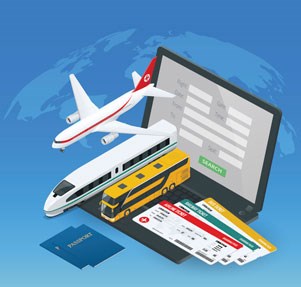How HR and risk management departments are working more collaboratively to keep their business travellers out of harm’s way

Forty percent of the estimated 500,000 passengers in the air at any given time are travelling for business. There are more people overseas on business than ever before and many more companies are mobilising large groups of workers – sometimes from multiple countries – into overseas worksites and new locations of which they may have limited knowledge of local risks (crime trends, for instance).
This means that there are, potentially, higher numbers of business travellers in harm’s way who, naturally, expect their company to provide more than the basic security support plan.
In the age of international assignments, workforce mobility has shifted from an administrative HR issue into a top risk for multinational businesses. Companies are under greater pressure to provide a duty of care and travel risk management strategy that keeps their staff safe, wherever they are in the world, with a recognition that each trip comes with its own, unique risks. This extends to support in the event of an emergency.
Work together
However, there can be a disconnect between the risk management department and human resources (HR) – both of which are involved in managing business travel risks – around the core threats and protections needed to ensure members of staff are kept safe.
In the age of international assignments, workforce mobility has shifted from an administrative HR issue into a top risk for multinational businesses
As employers respond to meet their duty of care to employees, there is a pressing need to break down the silos that exist between HR and risk management departments, which traditionally have operated as separate functions and are governed individually, says Karla Gahan, deputy global head of risk and advisory at VinciWorks. “It’s about making sure you have the right relationships, processes and systems in place to ensure you can contact people in an emergency or crisis.”
Gahan, who was the former risk and business continuity manager at global law firm DLA Piper, says that capturing up-to-date contact information on staff is often one of the major challenges when an organisation is implementing an emergency messaging system.
“Sometimes HR departments have disconnected processes. HR may not have up-to-date phone numbers for all staff and then as a separate issue, people don’t necessarily want to give you those personal details, perhaps for privacy reasons.”
“It comes down to communication,” she continues, “and this is where risk professionals have got a huge role to play in making sure the organisation’s messaging around travel safety and security is communicated clearly and concisely. Once they realise it’s for their own personal safety, people are more likely to buy into it.”
Know what the other side is doing
Working closely with other functions when it comes to managing people risk also makes good business sense, believes Emmanuel Fabin, insurance manager at TSB. “It’s important to have transparency and communication so there’s no duplication of effect. You need to have a more holistic approach to managing people because if you’ve got different teams doing different things you can undermine the effectiveness of the service being offered to staff.”
He gives the example of keeping HR informed when groups of employees are caught up in an incident abroad. “If they’re going to be stuck there for several days, this is going to have an impact on the business and all the different functions within the organisation need to be aware of that.”
Some organisations are beginning to make inroads, however, showcasing the benefits of aligning the two departments on business travel risks.
Sarah Sandbrook, head of talent consulting and initiatives at Deutsche Telekom says her organisation learnt a great deal from major events such as the 9/11 terror attacks and the Icelandic volcano eruption and subsequent ash cloud.
It comes down to communication and this is where risk professionals have got a huge role to play in making sure the organisation’s messaging around travel safety and security is communicated clearly and concisely. Once they realise it’s for their own personal safety, people are more likely to buy into it
“We have a group security and risk team, so if there is a major incident, they’ll swing into action, and they’re always there to provide guidance and support,” she says.
“When there is something like [9/11 or the volcanic ash cloud] and you’re talking about the impact on a global organisation, then having a consistent response and the weight of the business behind you is invaluable. Risk managers evaluate all kinds of risks and having them there to swing into action is one of the benefits of a large organisation.”
“For smaller organisations, [HR] are having to [manage the incident] on their own and that can be quite a scary proposition.”
Unique risks
AIG TRAVEL HIGHLIGHTS THESE CORE TRAVEL RISK STEPS

Plan ahead and be prepared
It is important to understand the potential cultural, legal and security issues in the locations you are visiting. Not knowing or disrespecting local customs might cause you to be the recipient of aggressive behavior from locals.
Documentation and accommodation
The cultural and legal climate should be carefully considered, including when booking a hotel or resort. Some circumstances may require a LGBTQ couple to reserve a room with two beds, instead of one, or applying for visas as single individuals if they are a married LGBTQ couple. For women, some hotels offer women-only floors and staying in a well-known and reputable hotel is strongly advised.
Safety, security and health
Consult a doctor before traveling to obtain specific travel health recommendations and vaccinations, and medical clearance as required. Travelers should also keep all medications in their original containers and carry an official note of medical authorisation from their doctor. For security reasons, it is usually better for an LGBTQ traveler to stay discreet at all times, even in more accepting areas, to avoid drawing attention. If you are harassed, remove yourself from the situation as quickly as possible and do not escalate by confronting your harasser. If you are being followed, find a busy establishment to enter.
Specific advice may be needed for certain groups of travellers who face unique risks, including women – who account for 40% of business travellers – and LGBTQ individuals. This is another area that calls for closer collaboration between HR and risk management departments.
According to a Women’s safety survey commissioned by AIG Travel, 45% of female travellers feel less safe or much less safe about traveling than they did five years ago; and 84% reported that their employers either did not provide travel safety tips or that they were not aware of any such tools.
Special considerations will also need to be given for LGBTQ business travellers. According to the International Lesbian, Gay, Bisexual, Trans and Intersex Association, there are 72 countries where homosexuality is illegal and in eight of those, homosexuality is punishable by death.
Moreover, as little as 11% of LGBTQ respondents to a 2014 study by Community Marketing Inc, indicated that they would be willing to visit a destination with laws that restrict LGBTQ rights; and 32% of LGBTQ travellers feel they are treated differently due to their sexuality when on holiday, according to The World Tourism Organization.
These findings culminate to suggest that a travellers’ personal profile including their gender and sexual orientation can change the risks that they face – and organisations must ensure they brief all business travellers with appropriate safety tips.
Your people are your responsibility
Sandbrook agrees that HR managers need to work with risk management departments to deliver safety and security messages.
She said: “It’s about risk awareness and making sure that from an employer point of view we’re fulfilling our duty of care obligations. That if we’re sending people abroad, we’re making sure they’re going to safe destinations or making sure they have safety briefings.”
Of course, new medical, reputational and security risks have long sat within the purview of risk managers, which is why greater alignment between teams make sense.
And risk managers need to learn from HR teams too, particularly when it comes to the more human sides of risk. For instance, the psychological issues that come with moving staff abroad, or the talent acquisition and retention strategies that are needed with new operations.
The human touch
Sandbrook concludes: “You need to nurture and build talent in the markets where your growth is coming from.”
“There’s been a huge change in the way resources are recruited managed and deployed. A typical manager 20 years ago would have a team sitting outside their office. Now they have direct employees, contract employees and people working nearshore, offshore and remotely… but you have to bring them together in a team.
“People can quickly become isolated and finding ways to check up on your staff if you’re a virtual manager is crucial.”
She adds: “Ignore the human element at your peril.”

